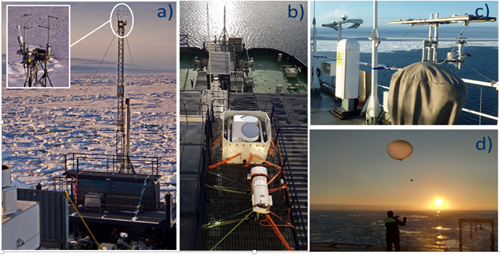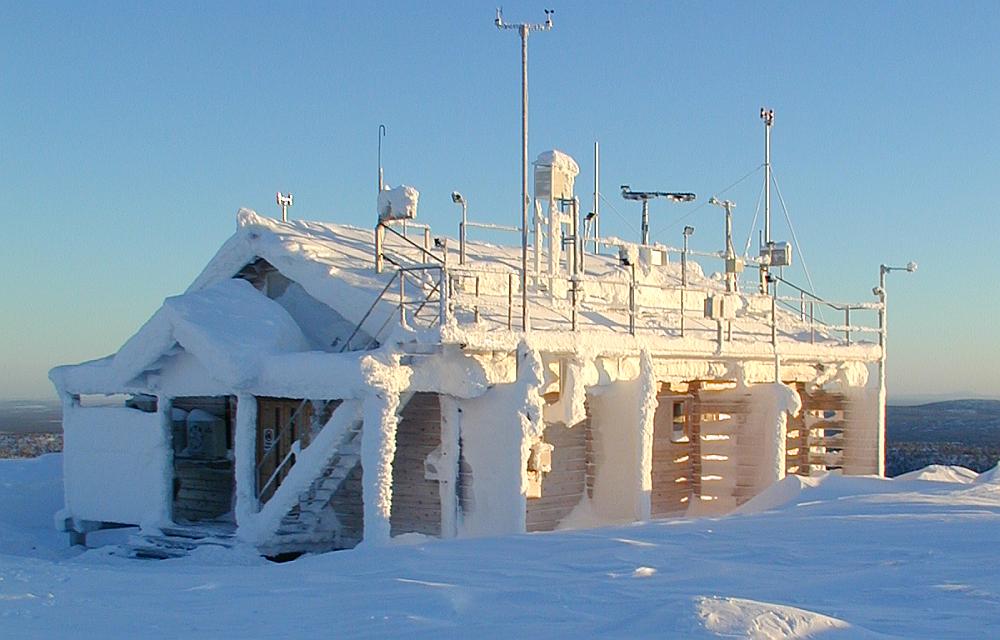The challenge is to obtain regular and reliable data from unmanned platforms and stations.
Challenges:
Atmospheric routine data are well organized under the auspices of the WMO’s global World Weather Watch and are available through national meteorological services. The challenge is to obtain reliable and timely data from unmanned platforms/stations and from research expeditions. In the Arctic instruments ice up within a matter of hours and in many cases it is impossible to determine a faulty sensor from a functional one by analysing the observations. Therefore, the operational network of atmospheric in situ observations to date is very sparse over Arctic land, and essentially non-existing over the Arctic Ocean. This is especially true for vertical profiling of the atmosphere; a core measurement for all types of modeling and for scientific understanding. It is therefore a challenge to develop autonomous instruments or measurement strategies that can work unattended in the harsh Arctic environment with a minimum of power requirements. Semi-autonomous instruments deployed on ships of opportunity are promising for obtaining more data from the Arctic.
Results obtained in INTAROS and exploitation plan.
Research from INTAROS highlight that for many applications satellite observations by themselves are clearly inadequate in the Arctic and hence there is a dire need for in-situ observations, especially over the Arctic Ocean. However, for pan-Arctic climate monitoring and for numerical weather forecasting, satellite data is the only viable option providing temporal and areal coverage. Hence adequate data assimilation of satellite observations and reanalysis using high-quality models will always be a necessary component, developed with and is kept honest by observations from frequent in-situ research campaigns providing sparse but high-quality data as a reference. This can be complemented by observations from ships of opportunity and observations from UAVs and other unmanned platforms.
The ship-borne atmospheric observatory was developed and deployed on the Swedish research ice breaker Oden; see pictures below. This will be deployed on Arctic expeditions on Oden at least for the upcoming three years. The data will be published openly according to FAIR principles.

Figure 1: The photos of several instruments constituting the atmospheric observatory on the research icebreaker Oden: (a) the foredeck mast with eddy-covariance flux instrumentation, (b) cloud radar and microwave radiometer on the 4th deck container roofs, (c) 7th deck weather station with gimballed radiation sensors in front and visibility and cloud lidar in the back, and (d) a radiosonde being launched from Oden’s helipad. Copyright: M. Tjernstrøm, Stockholm University.
11-10-2021
